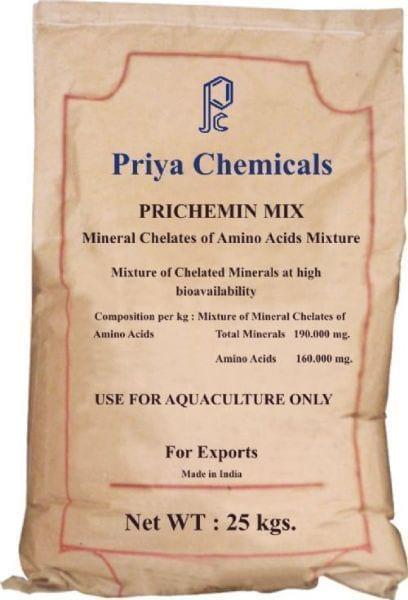Functional aqua feeds
Functional aqua feeds: Dietary supplements pledge the breakthrough
Interestig article about aqua feeds. It seems to have taken 40 years to understand that the artificial foods fed to fish are actually causing problems. Probiotics is not the solution just as antibiotics were not the solution either. No doubt all fish farmers will try them and similar problems will arise it is inevitable because something fundamental is still missing, you will have to work it out for yourselves.
Dear Laurence,
You said artificial aqua feeds to fish are actually causing problems. I would like you to define 'artificial foods' and then, provide some examples of artificial foods being added to compounded aquaculture feed. If you think that the types of functional foods discussed in this article are artificial food, then just to be clear that these are all usually of biological origin.
Again, reiterating the fact that whole concept of functional foods in aquaculture is relatively new not even 20 years old!
Thanks,
Kabir Chowdhury, Product Manager-Aquaculture, Jefo Nutrition Inc., Canada.
The question of "functional" aqua feeds (are there feeds that they are not "functional"?) is an interesting one. Our task is to create a new generation of fish feeds, nutritional and sustainable. The scope of this article is on nucleotides? Because, the title is rather more general...
The industry is trying to rear and grow fish and crustaceans as cost effective as possible. The demand for cheap but healthy animal products as a consequence forces the aqua feeds industry into a process of re-thinking.
In 2011, a total of around 734.5 million tons of compound feed were produced worldwide. All feeds are “functional” in terms of satisfying the nutritional needs of the target animals. But this in my opinion is not the classic definition of a functional food. Functional food or a Nutraceutical is a food where a new ingredient(s) (or more of an existing ingredient) has been added to a food and the new product has an additional function (often one related to health-promotion or disease prevention). This likewise also should apply to functional feed as well.
Compound feeds are feedstuffs that are blended from various raw materials and additives. These blends are formulated according to the specific requirements of the target animals. The formulation and production of compound feed targets the possibility to maximize performance on farms. If and how the biological potential in terms of performance of farmed animals can be achieved without specific functional additives in my opinion is questionable. Additives of natural origin as mentioned in the article (for sure fragmentary as there was never the claim for completeness), support the efforts of farmers to increase their production and at the same time stick to the legislations. What makes these compound feeds really functional in my opinion is the added value of a prevention of a disease or a support of a general health status.
Reducing feed costs in view of steadily increasing raw material prices is hard work. As a consequence the development of functional feed offers the possibility to produce feeds specifically “designed” to address already known recurring circumstances negatively affecting performance combining them with “regular” feeds in a kind of feeding program.
There are examples of feed producers that have developed functional feed programs merchandising them already for many years with great success. These should be taken as models. Not to reproduce their ideas but to review the possibilities to be able to start in a developing market segment.


PRICHEMIN MIX
Based on your title, Plant can be used as alternative of ingredient for feed, even protein from fish meal could be changed by protein from plant (20-30%). Although crude fiber in Plant, so high, but the plant contains nutritive value, too (amino acids,Vitamins, minerals), even the plant contains secunder metabolic, which increasing growth factor (indirect), and generally safe for organism, even could be medicine. Because of crude fiber in plant so high, the plant need treatment example be fermented. Based on those, For fish or crustacean feed, Should be looked for the plant Which easy to get, cheap, not depen on season, non toxic (safe) and high of nutritive value So in feed formulation. it no used probiotic.
I actually like the idea of designing functional feeds including plant derived ingredients. The benefits of specific plant extracts even for treatment of diseases must not be denied at all. Unfortunately, as you correctly mention yourself, plants have some disadvantages while compared to raw materials from animal origin such as lower protein content and higher content of fibres. Some of these disadvantages can be eliminated by pre-treatment of the plant material before feeding to the animals but others can’t. And this again opens the discussion about nucleotides and their importance for animal nutrition.
We have in the meantime analysed hundreds of samples of raw materials from different origins and it turned out that plant derived raw materials in general are low in the total nucleotide content. This needs to be compensated while formulating feeds. And in my opinion the underestimation of nucleotides in animal nutrition in general prevents the successful development of functional feeds even though the ideas and efforts are already available.


PRICHEMIN MIX


United States








